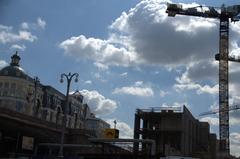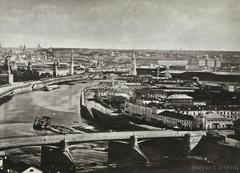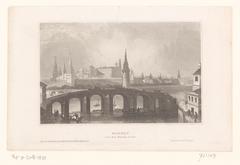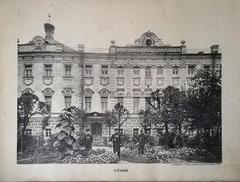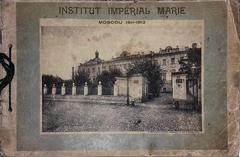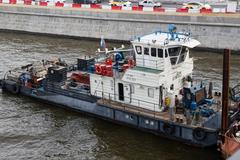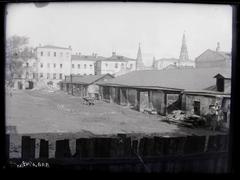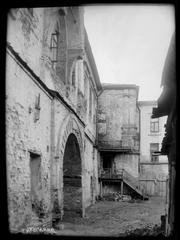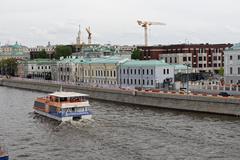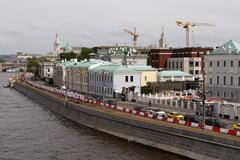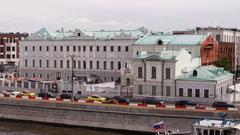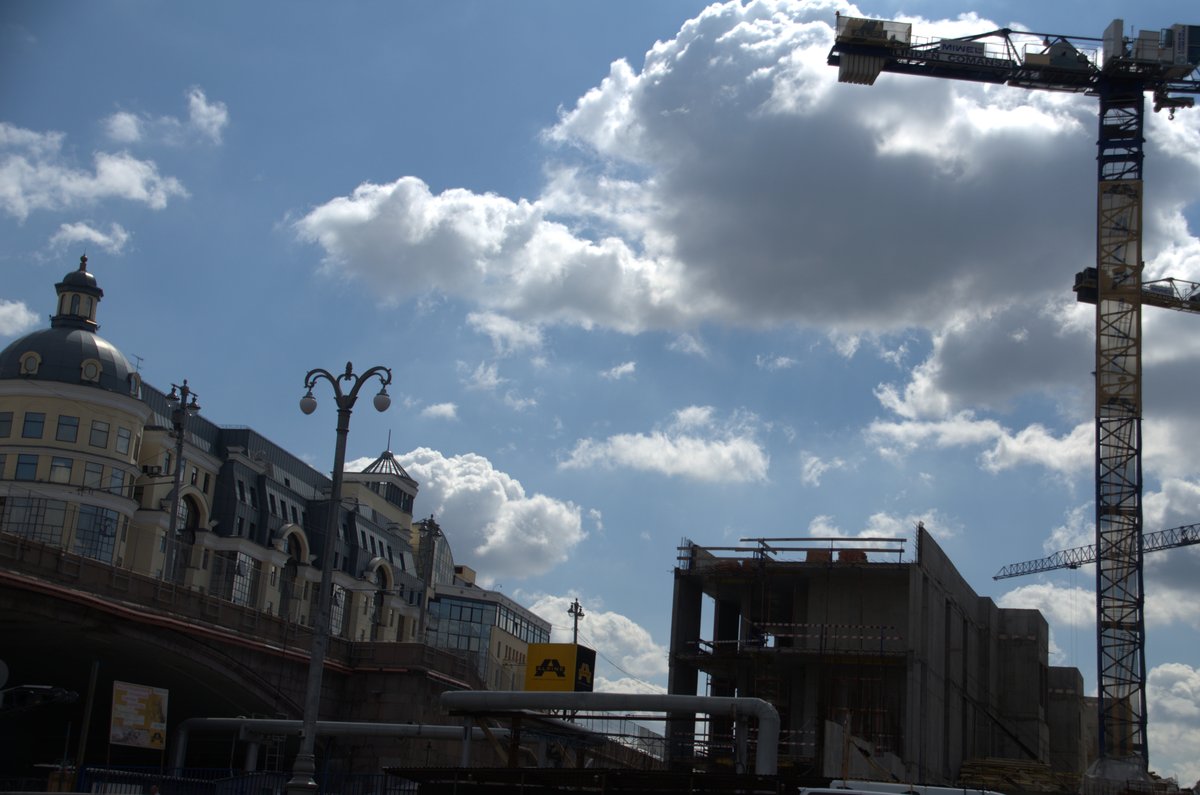
Sofiyskaya Embankment Visiting Hours, Tickets, and Travel Guide – Moscow Historical Sites
Date: 14/06/2025
Introduction
Sofiyskaya Embankment, gracefully lining the southern bank of the Moskva River opposite the Kremlin, is one of Moscow’s most picturesque and historically layered promenades. Offering sweeping views of the Kremlin’s towers and domes, this riverfront is both a living archive of the city’s evolution and a vibrant hub for locals and visitors. From its roots in the 15th century to its 21st-century revitalization, Sofiyskaya Embankment exemplifies the convergence of Moscow’s religious, aristocratic, and modern identities. This guide provides everything you need to experience the embankment—historical context, architectural highlights, up-to-date visitor information, accessibility tips, and recommendations for making the most of your visit.
Sources: en.birmiss.com, moscow-driver.com, nikatours.ru
Historical Overview
Early Origins and Naming
The embankment’s name stems from the Church of Saint Sophia the Wisdom of God, established in the late 15th century. The area was initially known for its orchards and wooden church, earning the moniker “the Gardeners.” In 1682, the church was rebuilt in stone, and its architecture evolved through several reconstructions, mirroring broader trends in Moscow’s religious and civic landscape (en.birmiss.com).
Development Through the Centuries
Fires and Reconstruction
Sofiyskaya Embankment has endured several destructive events, notably the fires of 1701 and the burning of Moscow in 1812 during the Napoleonic invasion. The aftermath prompted a transition from wooden to stone buildings and the elevation of the embankment, setting the stage for its present-day grandeur (heroesofadventure.com).
19th-Century Urbanization
Under engineer Andrey Ivanovich Delvig in the early 19th century, the embankment underwent a transformation as part of Moscow’s “dressing in stone” initiative. Grand mansions and estates rose along its length, establishing the embankment as a prestigious address (en.birmiss.com).
Soviet Era Modifications
Between 1964 and 1992, the embankment was renamed in honor of Maurice Thorez, reflecting Soviet ideological shifts. Despite modernization efforts, many historic structures were preserved, retaining the area’s distinct character.
Architectural Significance
Religious Heritage
The Church of Saint Sophia is Sofiyskaya Embankment’s architectural jewel, featuring classic Russian Orthodox elements such as kokoshniki domes and decorative platbands. The 1862 bell tower by Nikolai Kozlovsky is a visual counterpart to the Kremlin’s towers, enhancing the embankment’s skyline (en.birmiss.com).
Noble Estates and Art Nouveau
Mansions like the Kharitonenko Manor (No. 14/12) highlight the area’s aristocratic past, with classical exteriors and rare Gothic Art Nouveau interiors. Not far away, the Pertsov House stands as a vivid example of early 20th-century Art Nouveau experimentation.
Modern Additions
Recent years have seen the integration of contemporary architecture. Projects like the Tsar’s Garden Hotel Complex (studio44.ru) and multifunctional developments by Sergey Skuratov Architects (archdaily.com) harmonize glass, stone, and ornamental facades with the embankment’s historic rhythm.
Practical Visitor Information
Visiting Hours & Ticketing
- Embankment: Open 24/7, year-round. No entry fee.
- Church of Saint Sophia: Generally open 10:00–18:00; entry is free, donations welcome. Hours may vary on holidays.
- Nearby Sites: The Cathedral of Christ the Saviour is open 10:00–18:00; observation deck tickets are ~500 RUB. River cruises (seasonal) cost 800–1,200 RUB.
Always verify current hours and ticketing on official websites or at local information centers.
How to Get There
- Metro: Nearest stations are Kropotkinskaya (Line 1), Polyanka (Line 9), Biblioteka Imeni Lenina, and Borovitskaya (all within 10–15 minutes’ walk).
- On Foot: Walk across Bolshoy Kamenny Bridge from the Kremlin or Red Square.
- Public Transport: Buses and trams serve the area. Parking is very limited—public transit is recommended.
Accessibility
The embankment features ramps and smooth promenades; most areas are accessible for wheelchairs and strollers, though some historic buildings may have limited access.
Key Attractions & Panoramic Views
- Kremlin Views: Unmatched vantage of the Kremlin’s walls, palace, and towers.
- Cathedral of Christ the Saviour: Russia’s largest Orthodox church, a short walk away.
- Bolshoy Kamenny Bridge: A favorite for night walks and city panoramas.
- Riverside Parks: Shaded green spaces for picnics and relaxation.
- Notable Mansions: Kharitonenko Manor and Pertsov House along or near the embankment.
Guided Tours & Special Events
Guided walking tours and river cruises are widely available and recommended for in-depth historical and architectural context. During city holidays—such as Moscow City Day and cultural festivals—the embankment is especially lively. Check with local providers like Nika Tours for options.
Tips & Etiquette
- Best Time: Late spring to early autumn for weather; early morning or evening for photography.
- Dress Code: No restrictions for the embankment; modest dress required for church and cathedral visits.
- Safety: Well-lit and monitored; stay aware of your belongings.
- Amenities: Limited restrooms; cafes and restaurants are nearby, especially around the cathedral and city center.
- Photography: Drones are prohibited due to proximity to government buildings.
Accessibility for All
- Paths: Mostly accessible with ramps; a few uneven sections.
- Transport: Metro stations have elevators/escalators.
- Facilities: Benches, shaded areas, and clear signage.
Nearby Attractions
- Red Square & The Kremlin: Just across the river.
- Pushkin State Museum: 15 minutes’ walk.
- Gorky Park: Reachable via riverside stroll or taxi.
Frequently Asked Questions (FAQ)
Q: Is the embankment free to visit?
A: Yes, it is open and accessible 24/7 without charge.
Q: Are guided tours available?
A: Yes, including walking tours and river cruises (nikatours.ru).
Q: Is the embankment accessible for people with disabilities?
A: Mostly yes, with ramps and smooth paths.
Q: Where can I find restrooms or refreshments?
A: Near the cathedral and in adjacent cafes or restaurants.
Preservation & Modern Development
Recent decades have seen extensive restoration of historic sites and sensitive integration of new architecture. The Church of Saint Sophia was returned to the Orthodox Church in 1992, with its bell tower reconstructed in 2012. Modern developments, such as the Tsar’s Garden Hotel (studio44.ru) and projects by Sergey Skuratov Architects (archdaily.com), ensure the embankment remains both a monument to history and a vibrant urban space.
Conclusion
Sofiyskaya Embankment embodies the harmonious blend of Moscow’s historical depth, architectural splendor, and contemporary urban energy. Whether you come for the panoramic river views, explore noble mansions, attend seasonal festivals, or simply enjoy a leisurely riverside walk, the embankment is a must-see landmark. Plan your visit to coincide with guided tours, nearby events, and optimal photography moments for a truly enriching experience in the heart of Moscow.
For more travel insights, download the Audiala app and follow us on social media for Moscow’s latest events and guides.
Further Reading and Official Sources
- Sofiya Embankment: Sightseeing and History – en.birmiss.com
- Kremlin Views from Sofiyskaya Embankment – moscow-driver.com
- Guided Tours in Moscow – Nika Tours
- Things to Do in Moscow – Have Clothes Will Travel
- Multifunctional Complex on Sofiyskaya Embankment – archdaily.com
- Tsar’s Garden Hotel Complex – Studio 44
- Travel Tips – Owl Over The World
